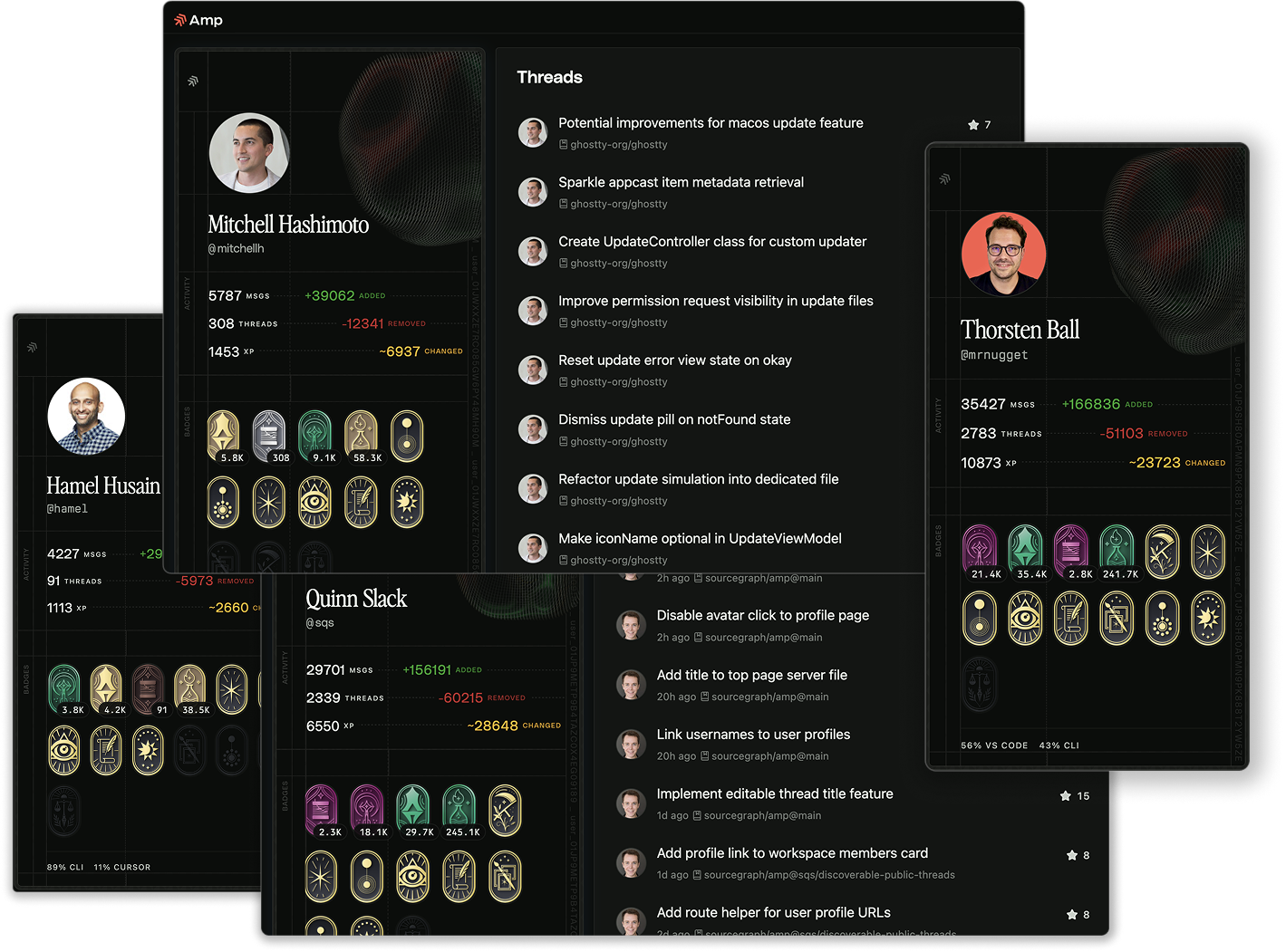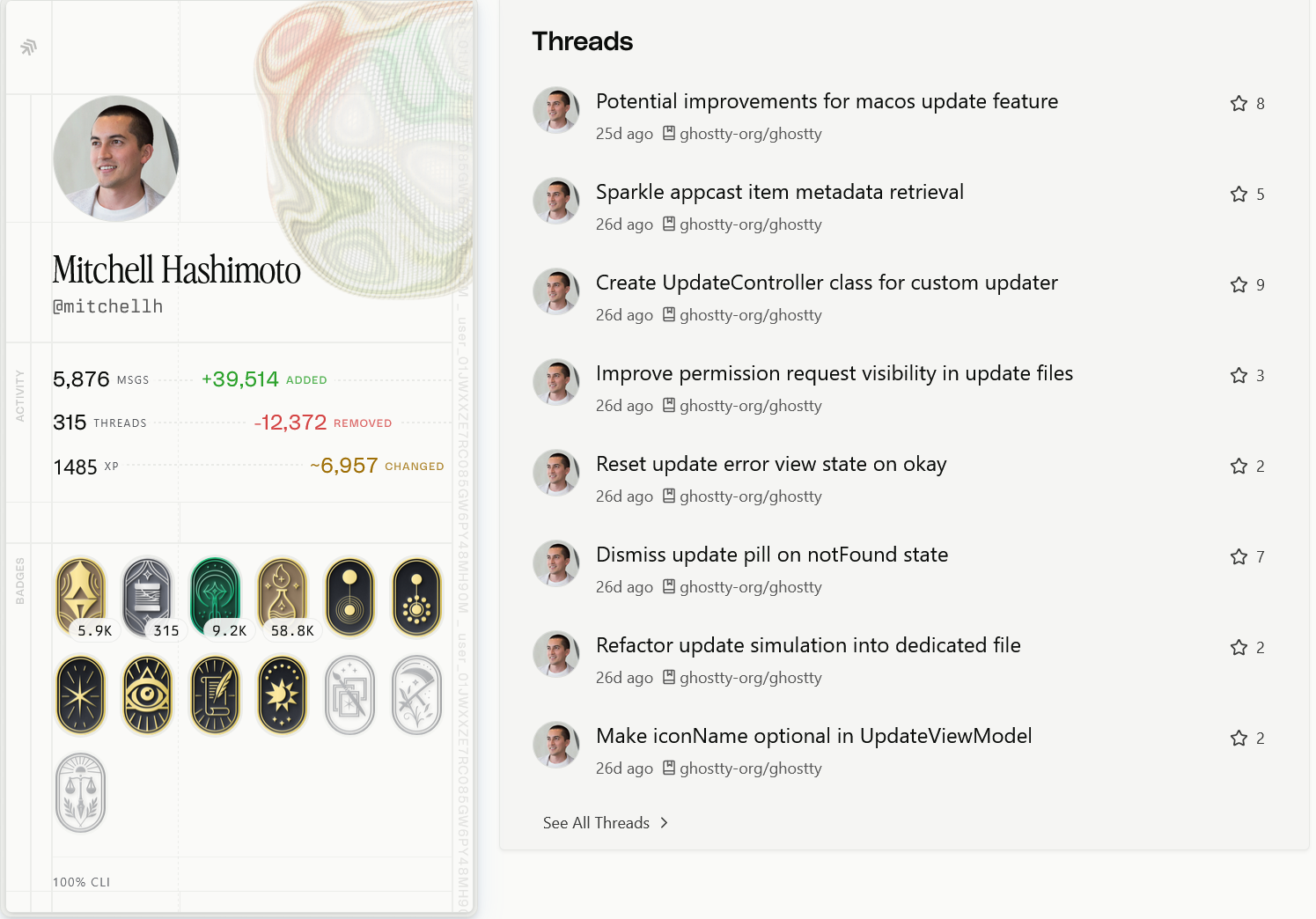
10 Nov 20255 minute read

10 Nov 20255 minute read

In a crowded room, the easiest way to blend in is to look like everyone else. The same holds true in the AI software-development market, where look-alike coding tools are multiplying and becoming difficult to differentiate — but one vendor is working to set itself apart in what is an increasingly crowded space.
Amp, the AI-powered coding assistant created by the folks at Sourcegraph, has been pulling out all the stops in its bid to do things a little differently. Last week, AI Native Dev reported on Amp’s novel ad-supported pricing model, a signal that it’s trying to rethink the norms of how coding tools should look, feel, and fund themselves.
Its latest effort revolves around the concept of “social coding,” with new public developer profiles that let users share their projects, prompts, and agent workflows with others.
For context, developers use Amp as an AI-powered workspace for writing and refining code through conversational prompts, either in the command-line or in IDEs like VS Code, Cursor, and Windsurf. With the new public-profile feature, those once-private interactions can now be shared with the masses, turning individual workflows into something others can learn from or build on.
It’s worth noting that Amp already allowed developers to share “threads” via public links — a feature that some early users, like Hashicorp co-founder Mitchell Hashimoto had previously praised.
“PRs [pull requests] with Amp threads attached make me very, very happy as a maintainer,” Hashimoto wrote on X back in September. “Here is one from a bug fix this morning.”
But with public profiles now in the mix, those one-off links are becoming something more permanent and discoverable. Previously, shared threads lived in isolation — accessible if you had the URL in a given context, but effectively invisible otherwise. Now, those sessions can appear on a user’s public profile, creating a browsable record of their work and turning what began as a practical collaboration tool into the foundation of a social layer for coding itself.

Hashimoto’s public Amp profile, for example, reveals that the Terraform co-creator has published more than 300 coding threads and exchanged nearly 6,000 messages — all through the command line.
The entirety of that work centers on his newest project, Ghostty, an open source GPU-accelerated terminal emulator. His public threads range from debugging build issues and optimizing rendering performance, to experimenting with cross-platform packaging, giving a granular look at how an experienced developer uses AI to iterate on a real product in real time.

Sourcegraph founder and CEO Quinn Slack, meanwhile, is using Amp as a proving ground — having logged over 2,000 threads and 30,000 messages across multiple interfaces, a sign of how deeply the company’s leadership is dog-fooding its own product.

For Amp, this social-coding push is as much about differentiation as it is about transparency and community-building. By making it possible to see how real developers use agents to solve concrete problems, the company is turning what was once a private exchange between coder and AI into something collectively useful — a living archive of examples, experiments, and fixes that others can learn from.
In some ways, it borrows a page from open source: where public repositories once made code itself shareable, Amp’s public profiles make the act of creating it visible — a kind of process-level openness for the AI era.
Developers can enable public profiles directly from Amp’s settings. Once activated, any threads they choose to share will appear under their @username handle, alongside basic stats such as follower count and message history.